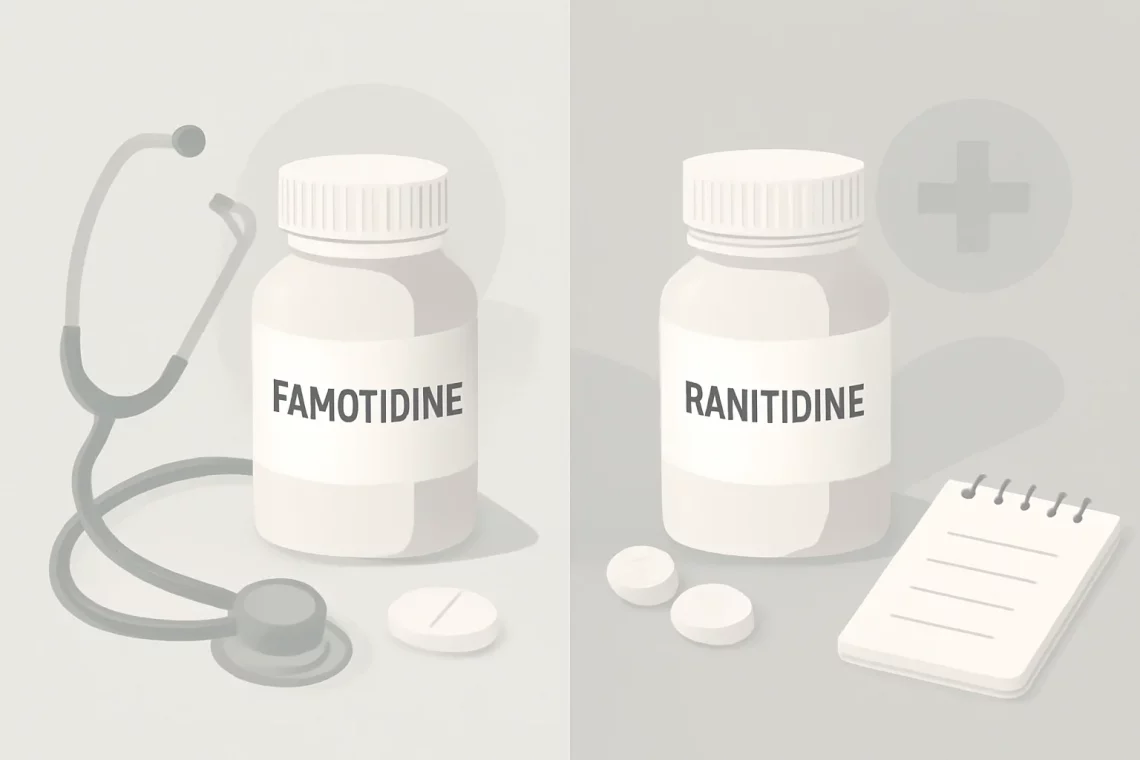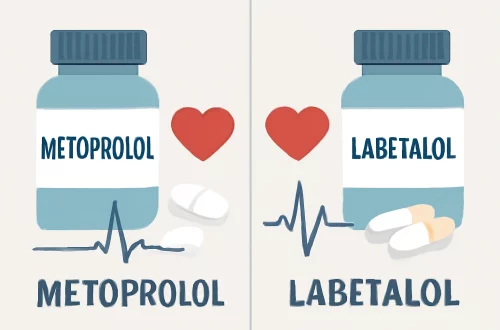
Famotidine vs Ranitidine: Which Antacid is Right for You?
Famotidine and ranitidine are two medications commonly used to treat conditions related to excess stomach acid, such as gastroesophageal reflux disease (GERD), peptic ulcers, and gastritis. Both belong to a class of drugs known as H2 blockers, which work by inhibiting the action of histamine on the stomach’s H2 receptors. This action ultimately decreases the amount of acid produced by the stomach.
Understanding the differences and similarities between these two medications can be crucial for patients dealing with acid-related disorders. While both famotidine and ranitidine serve similar purposes, they have distinct properties, side effects, and usage guidelines. The choice between the two might depend on various factors, including individual health conditions, medication interactions, and personal tolerance levels.
In recent years, the safety profiles of these medications have also come under scrutiny, especially with concerns surrounding ranitidine and its potential links to serious health issues. As a result, many patients and healthcare providers are re-evaluating their options when it comes to acid-reducing medications. This exploration of famotidine and ranitidine provides valuable insights for anyone looking to understand their treatment options better.
Mechanism of Action: How Famotidine and Ranitidine Work
Both famotidine and ranitidine are classified as H2 receptor antagonists, which means they block the action of histamine on H2 receptors located in the stomach lining. By inhibiting this receptor, these medications effectively reduce the secretion of gastric acid, which can help alleviate symptoms related to excessive stomach acid production.
Famotidine works by binding to H2 receptors in the stomach, preventing histamine from activating them. This action leads to a decrease in gastric acid secretion, resulting in a less acidic environment in the stomach. Famotidine is known for its potency and longer duration of action compared to ranitidine, often allowing for once-daily dosing in many cases.
Ranitidine operates through a similar mechanism but is generally considered less potent than famotidine. It also reduces gastric acid secretion but might require multiple doses throughout the day for optimal effectiveness. This difference in dosing frequency can be a crucial factor for patients in terms of convenience and adherence to treatment plans.
In addition to their primary function of reducing stomach acid, both medications can help promote the healing of ulcers and prevent the recurrence of gastric and duodenal ulcers. They are also effective in managing symptoms of GERD, such as heartburn and acid reflux. However, the specifics of their effectiveness may vary from person to person, and healthcare providers often consider individual patient factors when recommending one over the other.
Safety and Side Effects: What to Consider
While both famotidine and ranitidine are generally well-tolerated, they are not without potential side effects. Common side effects associated with famotidine include headache, dizziness, constipation, and diarrhea. These side effects are typically mild and may resolve on their own as the body adjusts to the medication.
Ranitidine, on the other hand, has faced increased scrutiny due to concerns about its safety profile. In recent years, the drug has been linked to serious health risks, including the presence of N-nitrosodimethylamine (NDMA), a potential carcinogen. This has led to recalls and increased regulatory oversight, causing many patients to reconsider their use of ranitidine.
Patients taking either medication should be aware of potential drug interactions. Famotidine, for instance, can affect the absorption of other medications by altering the acidity of the stomach, while ranitidine may interact with drugs that are metabolized in the liver. It is crucial for individuals to consult with their healthcare providers regarding any other medications they are taking to avoid adverse interactions.
Ultimately, the choice between famotidine and ranitidine should be made in consultation with a healthcare provider, who can assess the benefits and risks based on the patient’s medical history and current health status.
Effectiveness for Specific Conditions: Famotidine vs. Ranitidine
When it comes to treating specific conditions, the effectiveness of famotidine and ranitidine may differ based on individual patient responses and the nature of the condition being treated. For conditions like GERD, both medications can provide relief from symptoms, but famotidine’s potency may offer faster and more sustained relief for some patients.
In the case of peptic ulcers, both medications are effective in promoting healing and preventing recurrence. However, famotidine’s stronger action may lead to quicker symptom resolution. Studies have shown that famotidine can be particularly effective in patients with more severe symptoms or those who have not responded adequately to ranitidine.
For patients with a history of ulcers or chronic heartburn, healthcare providers may lean towards famotidine due to its favorable side effect profile and potency. However, individual preferences and tolerances play a significant role in treatment decisions, as some patients may find one medication more comfortable than the other.
Additionally, lifestyle factors such as diet, stress levels, and concomitant health conditions can also influence the effectiveness of either medication. Therefore, a comprehensive approach that includes lifestyle modifications alongside pharmacological treatment is often recommended for optimal management of acid-related disorders.
Patient Considerations: Making the Right Choice
Choosing between famotidine and ranitidine involves more than just understanding their mechanisms of action and potential side effects. Patients must consider several factors, including their overall health, the severity of their symptoms, and any other medications they may be taking.
One significant consideration is the recent concerns surrounding ranitidine’s safety. Given the potential risks associated with NDMA contamination, many patients may opt for famotidine as a safer alternative. Healthcare providers can offer guidance on the latest research and help patients make informed decisions based on their specific circumstances.
Patients should also consider their personal experiences with these medications. Some individuals may have previously used ranitidine without issues, while others might have encountered side effects that make them hesitant to try it again. Open communication with healthcare providers is essential for addressing these concerns and finding an appropriate treatment plan.
Moreover, the cost and availability of the medications can also influence patient decisions. Famotidine is often available over-the-counter, making it more accessible for patients seeking immediate relief. In contrast, ranitidine may have limited availability due to recalls and safety concerns.
Ultimately, the decision should be made collaboratively with healthcare providers, ensuring that patients feel comfortable and informed about their treatment options.
In conclusion, famotidine and ranitidine are both valuable medications for managing acid-related conditions, each with its unique benefits and considerations. While famotidine may offer greater potency and a more favorable safety profile, the choice between the two should always be made with careful consideration and professional guidance.
**Disclaimer: This article is not intended to provide medical advice. For any health concerns or questions regarding medications, please consult your healthcare provider.**




